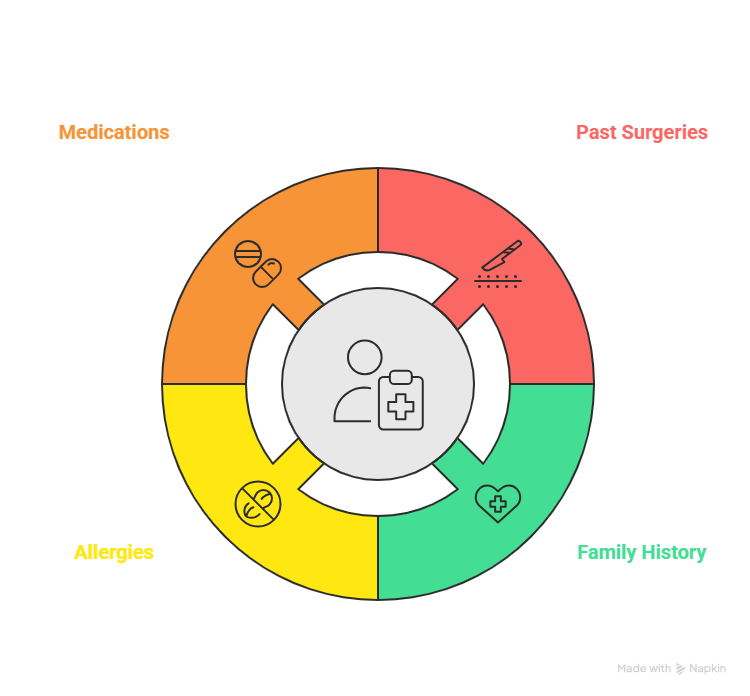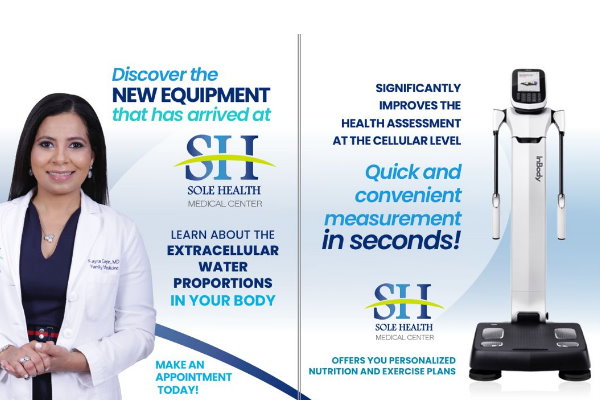
What Does a Wellness Exam Include? A Step-by-Step Breakdown for First-Time Patients
Understanding the Purpose of a Wellness Exam
A wellness exam, often called a routine physical, is a cornerstone of preventive healthcare. Unlike visits where you go in feeling sick, a wellness exam is about ensuring you stay healthy. It’s a proactive check-up — a time to evaluate your physical, emotional, and mental health before issues arise.
Your doctor uses this opportunity to detect early warning signs, discuss lifestyle habits, and help you plan for long-term well-being. The goal isn’t just to diagnose; it’s to prevent future problems by understanding your unique health profile.
During this visit, you’ll likely review your medical history, undergo a thorough physical exam, and possibly have lab work done. Think of it as an annual “reset” button — a chance to take control of your health journey.
Preparing for Your First Wellness Exam
Before heading to your first appointment, preparation is key. Start by gathering your medical records, insurance information, and a list of any current medications or supplements you take. This helps your healthcare provider understand your health history and avoid drug interactions.
Reviewing Your Medical History
Your provider will begin by asking detailed questions about your:
- Past surgeries or illnesses
- Family medical history (e.g., heart disease, diabetes)
- Allergies or chronic conditions
- Medications and supplements
This is also the perfect time to mention any new symptoms, even if they seem minor. A small detail might be the missing piece in identifying an underlying issue.

Discussing Lifestyle and Habits
Next, expect a conversation about your daily habits — including diet, sleep, exercise, alcohol, and tobacco use. Doctors often use these insights to recommend personalized strategies for improving health.
Remember, this isn’t about judgment; it’s about partnership. The more honest you are, the better your care will be.
The Physical Examination Process
This is where your healthcare provider performs a head-to-toe evaluation. It’s the most hands-on part of the exam and helps ensure every system in your body is functioning properly.
Vital Signs Check
- Blood Pressure: Monitors cardiovascular health.
- Heart Rate: Detects rhythm abnormalities.
- Temperature: Screens for infection or inflammation.
- Respiratory Rate: Evaluates lung and oxygen function.
These baseline measurements can reveal hidden issues, even in symptom-free patients.
Heart and Lung Evaluation
Your doctor uses a stethoscope to listen for irregular heartbeats, murmurs, or wheezing sounds in your lungs. These can point to early signs of heart disease, asthma, or infection.
Abdominal and Organ Examination
Gentle palpation (pressing) of your abdomen helps identify organ size and tenderness. Doctors also check bowel sounds to assess digestive health.
Neurological and Reflex Testing
To ensure your nervous system is functioning properly, you may undergo reflex tests (like tapping the knee), balance checks, or coordination exercises.
Gender-Specific Wellness Exam Components
Although most parts of a wellness exam are universal, gender-specific screenings play a crucial role in preventive care.
Women’s Wellness Exams
For women, the visit may include:
- Pap smear to detect cervical cancer
- Breast exam to identify lumps or changes
- Pelvic exam for reproductive health
- Hormone evaluation, particularly around menopause
Men’s Wellness Exams
Men’s visits may include:
- Prostate screening (PSA blood test or digital exam)
- Testicular exam to detect abnormalities
- Hormone assessment to check testosterone levels
These gender-focused screenings ensure early detection of reproductive and hormonal issues.
Laboratory and Diagnostic Tests
Many wellness exams include lab work to give a more complete picture of your internal health.
Common Blood Tests
- Complete Blood Count (CBC): Checks for anemia or infection.
- Lipid Profile: Monitors cholesterol and heart risk.
- Glucose Test: Detects prediabetes or diabetes.
- Thyroid Panel: Evaluates energy and metabolism levels.
Additional Screenings
Depending on age and risk factors, your doctor might order:
- Cancer screenings (colon, breast, prostate)
- Bone density tests for osteoporosis
- STD screenings for sexual health
Mental Health and Emotional Wellness Assessment
A holistic wellness exam also includes discussions about stress, anxiety, mood changes, and sleep. Your provider may ask about your coping mechanisms or offer mental health resources. Emotional well-being is just as vital as physical health, and regular check-ins can prevent burnout or depression.
Follow-Up and Preventive Care Planning
Once results are reviewed, your doctor will discuss:
- Test outcomes and what they mean
- Personalized recommendations
- When to return for follow-up visits
This stage often includes goal-setting — whether it’s improving nutrition, quitting smoking, or managing blood pressure.
Benefits of Regular Wellness Exams
Routine exams offer:
- Early detection of chronic diseases
- Personalized preventive care
- Stronger patient–doctor relationships
- Long-term cost savings by avoiding major medical interventions
According to the CDC, adults who attend yearly wellness visits are 40% more likely to detect preventable conditions early — a statistic worth remembering.
F.A.Q.
They’re often used interchangeably, though “wellness exam” emphasizes preventive and holistic care rather than symptom treatment.
Absolutely — many providers incorporate mental health screenings as part of overall well-being.
Yes, your provider can update routine immunizations during your visit.
If fasting blood tests are ordered, you may need to avoid food for 8–12 hours prior.
Most adults should schedule one annually, though your doctor may recommend more frequent visits based on health conditions.
Conclusion: Take Charge of Your Health
A wellness exam isn’t just a medical formality — it’s a roadmap to your healthiest life. By staying proactive, you empower yourself to prevent illness, track progress, and make informed decisions. Whether it’s your first visit or your fifteenth, each wellness exam brings you one step closer to lifelong vitality.
Family Medicine vs. Urgent Care
Jimenez2025-07-11T21:47:29+00:00July 11, 2025|Categories: Prevention, Screening|Tags: Health Screenings|
What is Family Medicine? Family medicine is a comprehensive healthcare specialty that offers continuous [...]
10 Signs You Should See a Primary Care Doctor Right Away
Jimenez2025-06-23T21:29:04+00:00June 23, 2025|Categories: Prevention, Screening|Tags: Health Screenings|
Life moves fast, and with busy schedules, it's easy to overlook minor health issues. [...]
The Complete Guide to Preventive Health Screenings in Florida
Jimenez2025-06-13T16:49:49+00:00June 13, 2025|Categories: Prevention, Screening|Tags: Health Screenings|
Introduction to Preventive Health Screenings Preventive health screenings are routine medical tests designed to [...]
InBody Body Composition Analyzer the Future of Health Assessment
Jimenez2025-05-28T13:58:06+00:00May 28, 2025|Categories: Obesity, Prevention|Tags: body analysis, weight loss|
Discover the Future of Health Assessment with InBody Composition Analyzer Scale at Sole Health [...]





